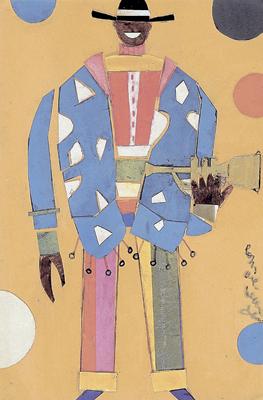Enclosed in a winding braid of branches with light pushing through the many gaps, a person standing inside Patrick Dougherty’s tall, woven, wooden structure called “Side Steppin'” could mistake the twinkling light for a beautiful dusk. Like Duke’s new Nasher Museum of Art, Dougherty’s work has revived the old and forgotten. A Chapel Hill-based artist, Dougherty used remnants from the Duke Forest to create many tall towers at the entrance to the new Nasher Museum.
“We admire Dougherty’s work and really wanted to commission a piece for the museum’s opening, especially since he lives locally. Yet, he also has an international reputation and works all over the world,” Kimerly Rorschach, the Mary D.B.T. and James H. Semans director at Nasher, said. “To me, the piece says something about our relationship to our site and the forested landscape around the campus. It is also very engaging because visitors can walk around and through it and can touch it.”
Architect Rafael Vinoly built Nasher — which is named after the museum’s founder Raymond Nasher — and it opened on Oct. 2, 2005. The $24 million structure celebrates the vast collection held inside its walls.
“It is a new museum, and thus literally represents a rebirth for Duke’s museum,” Rorschach said. “We have a new modern building, purpose-built as a museum, and an increased focus on ambitious special exhibitions.”
Once a person enters the bright, spacious interior, a help desk in the middle of the floor briefly interrupts him. After paying either the five dollar entrance fee for adults or the three dollars for non-Duke students, he receives a metal chip to stick in his pocket. And off he wanders to explore galleries full of breathtaking pieces.
“We will of course continue to feature the museum’s traditional collection strengths in European medieval sculpture, classical antiquities, pre-Columbian art and African art,” Rorschach said. “But we have an increased emphasis on modern and contemporary art compared to the old Duke University Museum of Art.”
The permanent collection will continuously be renewing the pieces in view.
“We will rotate the permanent collection displays every 12 to 18 months,” Rorschach said.
The temporary, specialized exhibits typically last several months and are constantly in motion. The Nasher has one additional exhibit entitled The Evolution of the Nasher Collection, which showcases the Nasher family’s private collection and runs until May 21.
“[When Nasher chooses a piece] I’d say he thinks about quality, condition, rarity and how the piece fits into the existing collection, which is probably now the world’s greatest, most comprehensive collection of modern and contemporary American and European sculpture,” Rorschach said.
The Nasher collection contains an incredibly impressive roll call of artists, including Pablo Picasso, Henri Matisse, Andy Warhol and Auguste Rodin.
“I tell people not to miss Matisse’s ‘The Serf’ and Matisse’s ‘Decorative Figure,’ as well as Picasso’s ‘Pregnant Woman’ and Giacometti’s ‘Spoon Woman,'” Rorschach suggested. “Raymond Duchamp’s ‘Villon’s Horse’ is also spectacular, by a somewhat lesser known, yet very important artist who was a contemporary of the others.”
Beginning March 4 and lasting until July 16, the Nasher collection will receive some company. Two new exhibits, Something All Our Own: The Grant Hill Collection of African American Art and Conjuring Bearden will situate in empty galleries adjacent to the current exhibits.
“Grant Hill is a collector of 20th-century African American art, and the exhibition will showcase the works he has assembled over the years,” Rorschach said.
Hill will also head a restricted press event.
“Mr. Hill will lead the media on a tour of his exhibition, followed by a question and answer period exclusively for student journalists,” said Wendy Hower Livingston, the Nasher’s manager of marketing and communications, said.
The Conjuring Bearden event is also a view into the deeply spiritual, rooted elements of African-American art.
“The collection’s holdings of works by Romare Bearden and Elizabeth Catlett are particularly strong, but there are other wonderful lesser known artists as well,” Rorschach said.
“The Bearden exhibition was organized by a Duke faculty member, Rick Powell, and his students, so it represents a collaboration and a contribution to teaching and learning at Duke … It focuses on Bearden’s works on a particular theme, the African American faith healer or ‘conjur woman’ — a theme that was very important in his work but that has not been studied in detail.”
So what else should students look for at Nasher?
“It’s rare to have so much wonderful sculpture on view at one time, so be sure to really spend some time not only looking, but really walking around and experiencing the three-dimensional aspect,” Rorschach said.








